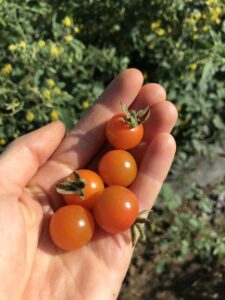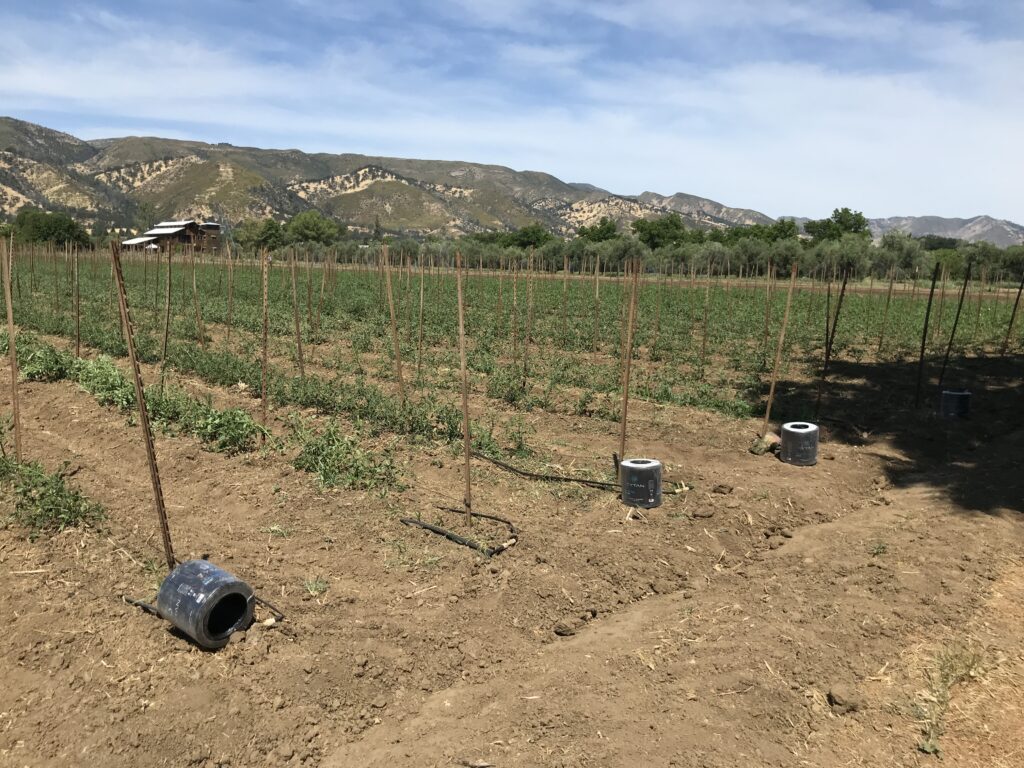
Seeing rolls of twine at the end of a tomato field means someone is about to tie tomatoes, someone is tying tomatoes, or someone just finished tying tomatoes.
Once we’ve staked the plants (refresher, plus video, on that process here), the next step of the tomato growing process is tying. Tomatoes are large, vine-like plants that need some extra handling so that they aren’t a mess of plants and fruit sprawled on the ground.
Each tyer gets the tomato plants in a twine sandwich that provides support, makes for easier picking, and allows a crew to pass through the rows. It also helps with healthier plants (more airflow means less fungal diseases) and food safety (reduced exposure to soilborne pathogens).
On Wednesday, Alfredo was getting stakes set up and four others were following behind to add the twine. There are several different tying styles and methods. Often people carry the roll of twine with them; our team wasn’t. They were laying out the twine first and then wrapping it. Regardless of the method, it’s important that the stakes are secure and the twine is a material that doesn’t stretch!
See this video of the team doing their first round of tying last Wednesday. The first two tyers are getting the first side of the sandwich set up, and the third tyer is getting the second side. After he wraps the twine, it’s a lot easier to see the role of the twine in making the plants more orderly and keeping them off the ground.
That video just shows the first tying. Most tomatoes get tied five times, about every foot or so. All told, we’ll use almost 200 miles of twine. That’s a lot of twine, and a lot of walking, bending, and hard work to get it set up. Right now we have tomatoes that haven’t been staked or tied yet, and then one field each that has been tied one, two, and three times. It’s a little hard to see the difference when there’s only one level of twine, but the photos below show the tomato plants before and after being tied, from above, as well as closeups of how the twine is wrapped around the stakes.

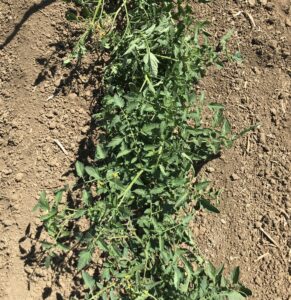
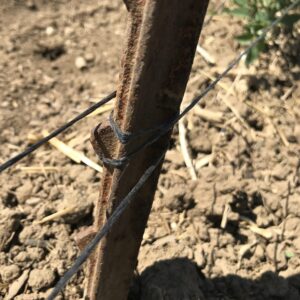
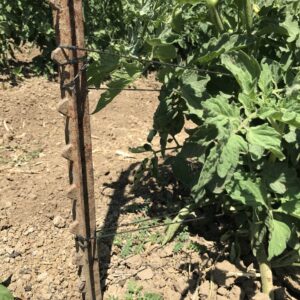
Even after tying, parts of the tomato plant stick out into the rows so (especially in the cherry tomatoes) we sometimes will use a hedge trimmer to clean things up when the rows are looking a bit overgrown.

Speaking of cherry tomatoes, if you look hard enough in the first tomato planting, which has been tied three times, you can find the first cherry tomatoes hidden away at the bottom of the plants. Tasting my first tomato reminded me why we do all this hard work to stake and tie the tomatoes. It’ll be a while before we have enough to put in the CSA boxes but if you can make it to one of our farmers markets, and if you arrive early, you might be able to snag some for yourself!
– Elaine Swiedler, CSA Manager

